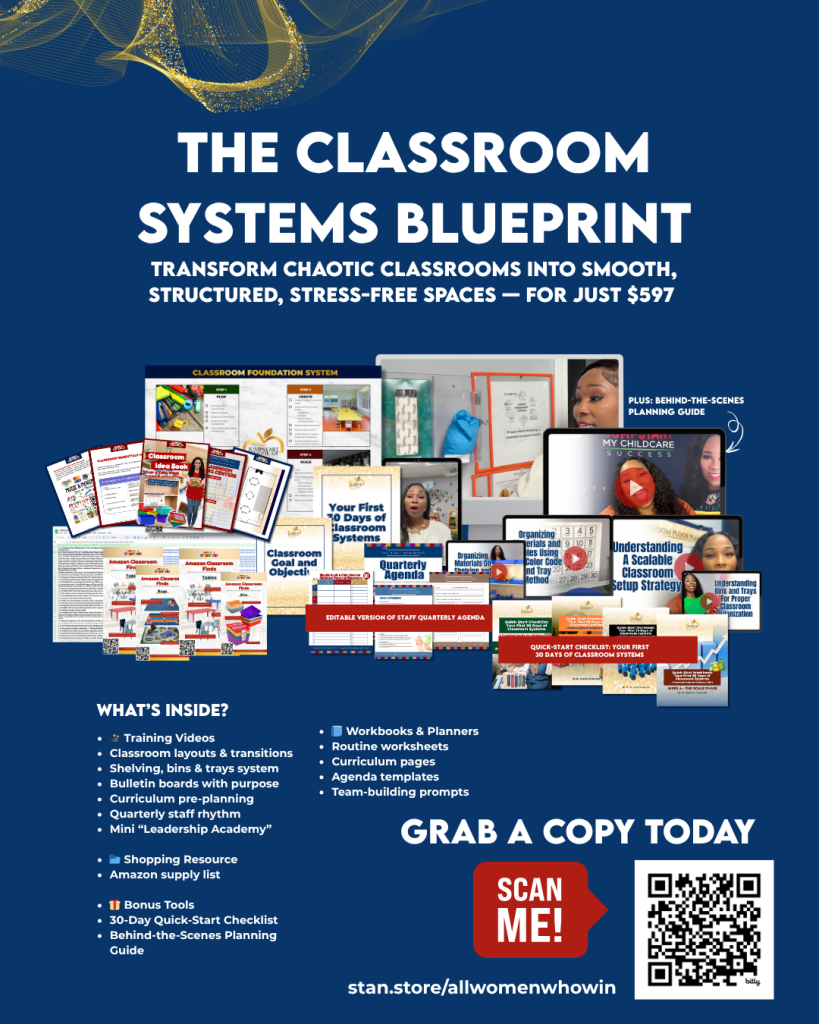3 Ways CEOs Turn Chaos Into Systems


So here we go — let’s talk about how successful CEOs turn daily chaos into clear, organized systems that actually work.
If you’ve ever felt like your childcare business is running you instead of the other way around, this is your sign to pause, take a breath, and start thinking like a systems-driven CEO.
These three principles will change how you lead, manage, and scale your childcare business.
1. Set Clear Management Expectations for Each Department

This is the first mindset shift you need to make when turning chaos into systems.
Your biggest strategy will always come from the expectations you have for your departments.
If you don’t know which departments you have, it’s time to start there, because there are 9 key departments that guide a fully systemized childcare business. For each one, you must have clear management expectations.
Why It Matters:
You can’t inspect what you haven’t expected.
When you set clear expectations, you can measure results, close out daily operations, and hold your team accountable.
Example:
If you expect your office team to close out the CRM every night, that’s a management expectation.
If you expect your directors to complete daily rounds, then you must give them time, structure, and a checklist to make it happen.
Management expectations = what you want done and why.
That’s how you build consistency across every department.
Systems vs. Processes
- A system is the structure that keeps your business running (like hiring, enrollment, or billing).
- A process is the step-by-step way that a structure operates.
Without systems, you’re stuck in chaos.
With clear processes, your center runs smoothly.
2. Understand Department Workflows

Here’s where many owners get stuck — expecting their admin team to “just do it.”
We’ve all been there. But even the best team needs clarity.
Every department has a workflow — a specific, repeatable sequence that takes tasks from start to finish.
When you identify each workflow, your business stops depending on memory and starts running on systems.
How to Apply This:
Ask yourself:
- What steps take this task from open to close?
- Who’s responsible at each stage?
- What tools or checklists are needed?
When you document this workflow, you’re not just creating structure, you’re building a training manual for success.
At the School of Systems, we help childcare CEOs build out every workflow so they can scale without chaos.
3. Require Daily Data and Close-Out Reports

This final system separates reactive centers from proactive ones.
Never let a day go by without your team touching base.
That means submitting a close-out report, sending an update to operations, or communicating results to leadership.
Daily data gives you a snapshot of what really happened — even when you weren’t in the building. It builds accountability, transparency, and history.
When combined with clear expectations and solid workflows, these reports give you total control over your operations.
The Bottom Line
Turning chaos into systems isn’t about doing more — it’s about thinking differently.
✅ Set clear management expectations.
✅ Define and document every workflow.
✅ Require daily data and accountability.
These three habits will help you move from survival mode to scalable success.

If your classrooms still feel chaotic, it’s not a teacher problem — it’s a systems problem.Start fixing it today.
Grab the Classroom Systems Blueprint and discover the proven framework that helps childcare CEOs organize classrooms, train teachers, and run their centers with confidence.

